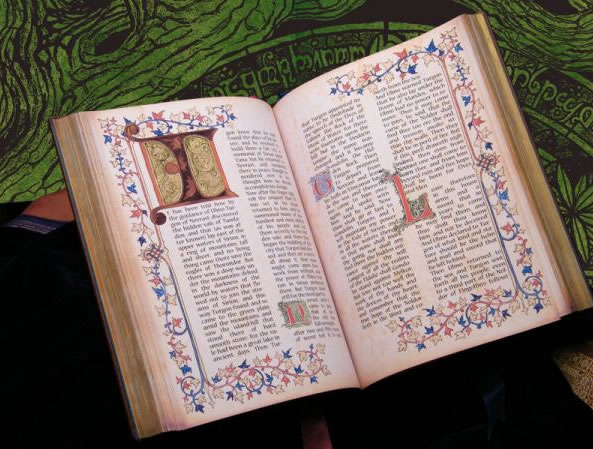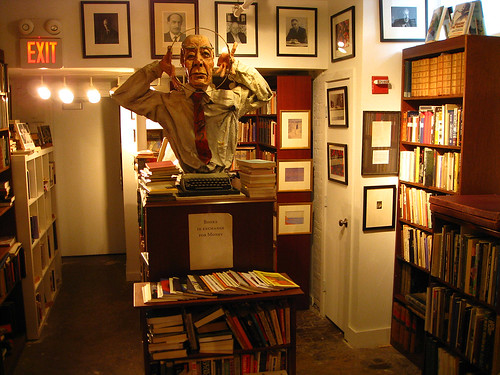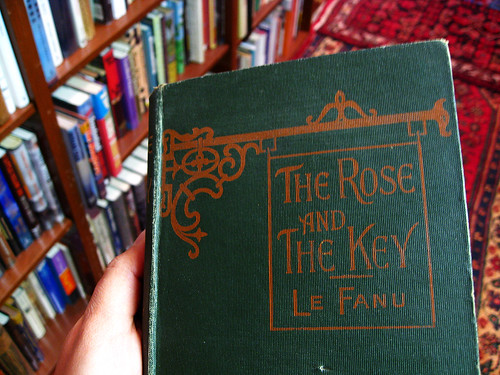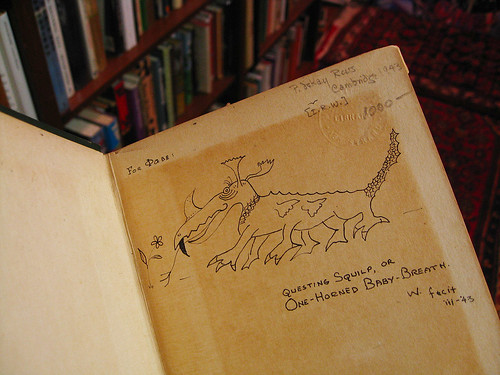Date read: 8.10.11
Book from: Personal collection
Reviewer: Emera
“It’s the Chinese Year of the Dog! When Pacy’s mom tells her that this is a good year for friends, family, and ‘finding herself,’ Pacy begins searching right away. As the year goes on, she struggles to find her talent, deals with disappointment, makes a new best friend, and discovers just why the year of the dog is a lucky one for her after all.”
Another hug in book form from Grace Lin. This is her first novel, aimed for a slightly younger reader than Where the Mountain Meets the Moon (review) is. Lin’s writing, though sometimes clunky, has a straightforward warmth and cheerfulness that I continue to find irresistible. The dialogue had me laughing surprisingly often, especially the exchanges between Pacy (Lin’s fictionalized younger self) and her parents and older sister. And as in WtMMM, Lin interlaces the main narrative with tender, funny stories shared by Pacy’s friends and family, and copious, loving descriptions of food and food-centric imagery. (“The days disappeared like dumplings on a plate,” Pacy narrates at one point.)
Pacy’s life isn’t a dramatic one, but there are all sorts of little confusions and upsets to be navigated, both as a young girl tasked with “finding herself,” and more specifically as a first-gen Taiwanese-American who speaks neither Mandarin nor Taiwanese: sorting out holiday traditions, being called a twinkie (yellow on the outside, white on the inside) by other Asian-Americans, feeling alternately too Asian or too American to fit in a given context. Lin calls The Year of the Dog “the book I would have liked to have when I was little.” As a Chinese-American who regularly feels guilt over barely being able to speak Mandarin, I appreciated it just as much now, especially since I’ve been thinking pretty often this summer about cultural identity and immigrant assimilation.
There were also plenty of silly (but mortifying at the time) moments that I identified with and loved seeing in Pacy’s story. Possibly my favorite “OH MY GOD MY CHILDHOOD” moment:
Everyone in our neighborhood hung up Christmas lights all over their houses and trees. We tried to get Dad to do the same. Dad hung the lights, but he didn’t spend too much time doing it. Without putting on his coat or boots, he ran outside and threw them on a bush.
“Brr,” he said, stomping the snow from his bedroom slippers, “it’s cold out there.”
So, of course, while everyone else’s lights were in nice arches and evenly spaced all over their trees and bushes, our lights looked like a blob with lightbulbs flashing frantically for help.
“It looks more natural this way,” Dad said when we complained.
There is one weird point of unaddressed conflict: Pacy’s best friend at the start of the book is a white girl named Becky. When a new Taiwanese-American girl arrives at Pacy’s school, they quickly become best friends instead, but we never learn how Becky feels about it (resentful, confused, unfairly excluded?), or whether Pacy feels any confusion or guilt over it herself. I was nonplussed to see that fly under the narrative radar; Lin seems to have decided to elide any potential tension there.
Go to:
Grace Lin: bio and works reviewed
Where the Mountain Meets the Moon, by Grace Lin (2009): review by Emera



